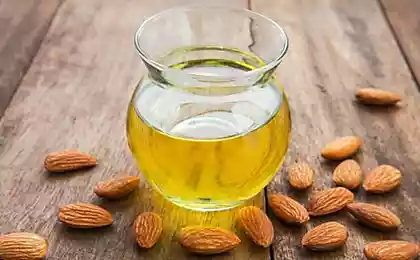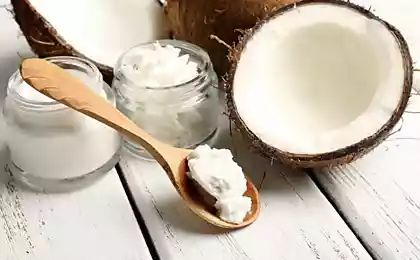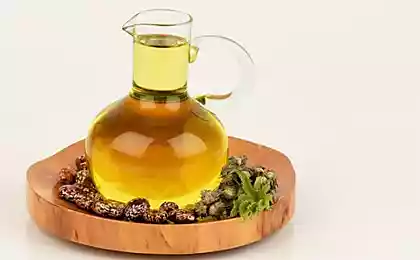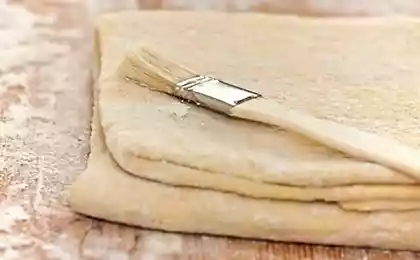570
How does changing butter with margarine affect baking?
Margarine or butter? What's the best for baking? Both products have their own strengths and weaknesses. Therefore, housewives face a difficult choice.
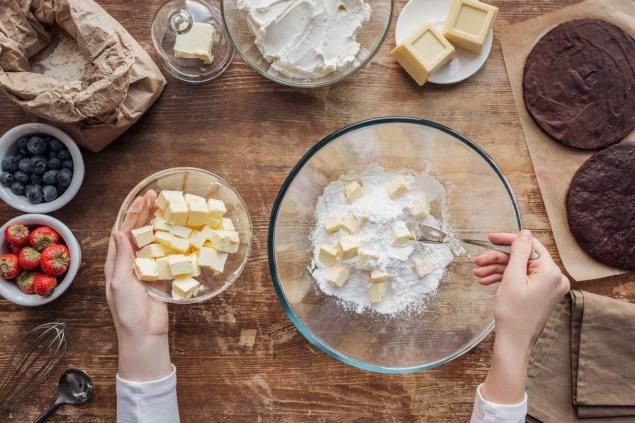
The "site" has comprehensively studied the problem and will tell the readers which type of fat is better to give preference in each specific case.
Margarine or Butter Product Composition Butter is an animal product made from cream (which, in turn, is obtained from whole cow's milk). Beat the cream until the mass reaches a firm consistency.
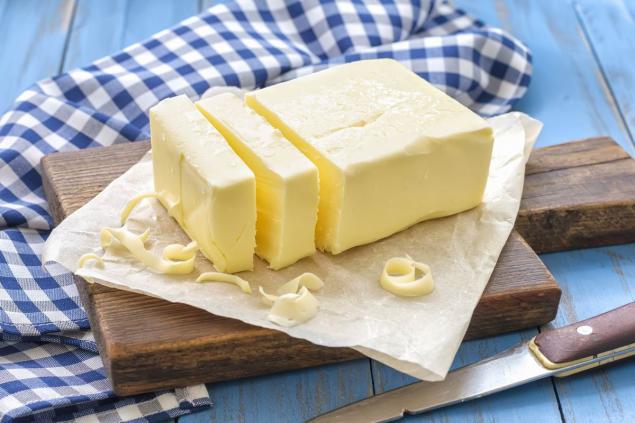
According to GOST 32261-2013, butter contains at least 72.5% (in some types 80% or 82.5%) of fat. More than half of them are saturated fatty acids.

Externally similar to butter, margarine nevertheless has a completely different origin. It is prepared from vegetable oil by hydrogenation (addition of hydrogen). The result is a solid mass that resembles oil.
The composition of margarine also includes drinking water, starch and cocoa powder, flavorings and emulsifiers, dyes and preservatives, acids (for example, citric) and vitamins may be present.
Health Effects Butter is rich in saturated animal fats. They increase cholesterol levels, and this may be undesirable for people with risk factors: smoking, excess weight, constant stress, cases of atherosclerosis in the family.
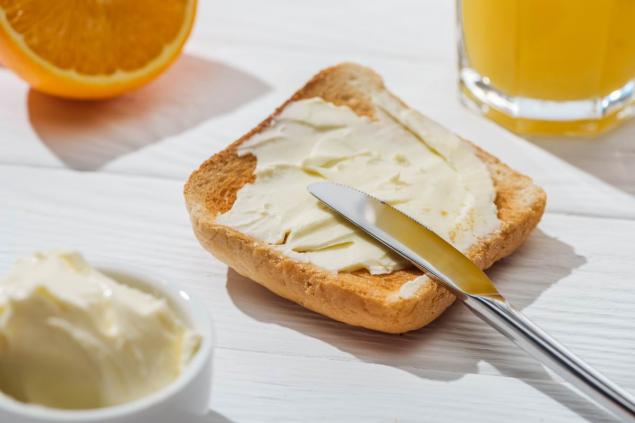
Margarine, unlike butter, does not contain cholesterol. But there is also a downside to the coin. It raises concerns due to its trans fat content. It should be said that the standards introduced in 2018 allow no more than 2% of trans fatty acid isomers in margarine. Previously, no more than 20% was allowed.
Use for baking Baking with butter turns out to be more tender, tasty, shortbread dough in butter turns out to be more crumbly, since the fat content of butter is much higher (up to 80%) than margarine. Only unscented butter is ideal for making creams.

The smell of margarine may not be as pronounced, but many people do not like it in baked goods. But dough cooked in margarine rises faster, finished products retain their splendor longer.
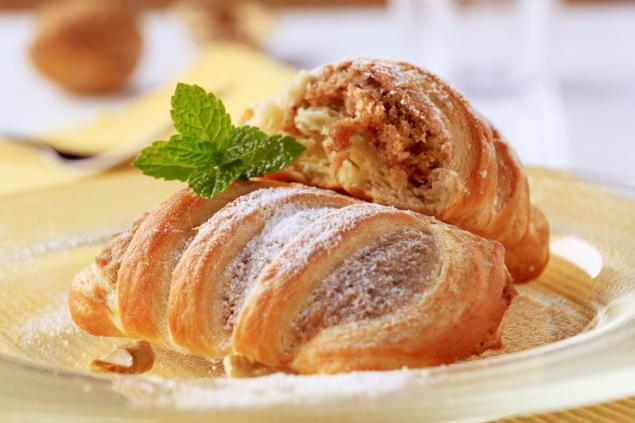
Better puff pastry is obtained with margarine. This can be explained by the fact that the melting point of butter is lower and it will melt ahead of time.
Butter vs vegetable oil For example, we prepared two identical biscuits from a ready-made mixture. One with milk and butter added. The second is with water and vegetable oil.
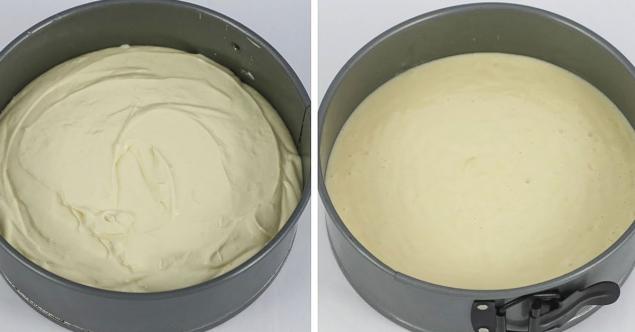
The difference is noticeable already at the cooking stage. The mixture with water and vegetable oil turned out to be more liquid and even. The dough with milk and butter turned out to be denser, and it needed to be further leveled.
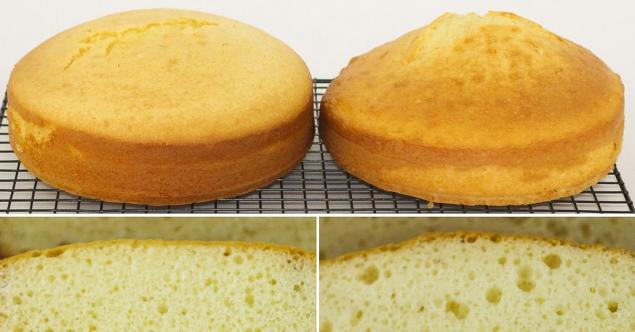
Although the top of the butter dough was not even, the cake rose more evenly during baking. The finished biscuit turned out to be a fairly uniform golden color and with a dense texture.
The sponge cake with vegetable oil rose more in the center. After cutting, it was found that the texture is more porous with large air bubbles.
Verdict Both cakes taste about the same. I can only say that in the second case there was a mild vegetable oil aftertaste. I preferred a cake made with butter. He passed the visual test better and did not disappoint with taste.
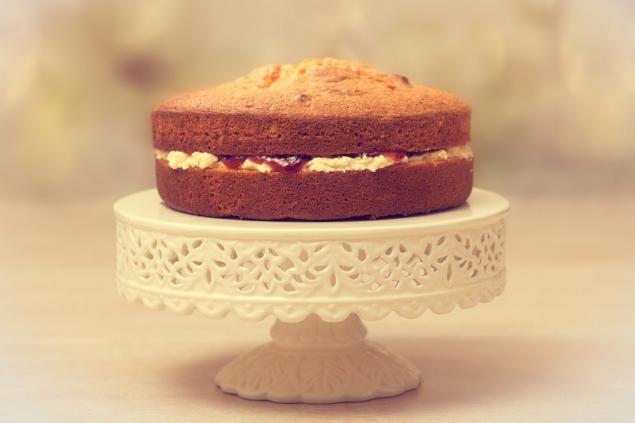
But the children, for example, did not feel much difference. Therefore, vegetable oil can be used instead of butter for people with high cholesterol levels for taste, economy, or for any other reason.
As for margarine, it is better to use it only if it is specifically specified in the recipe. Failure to do so can lead to creeping and burning of the dough. It is also worth choosing a special "baking" margarine (usually this mark is present on the packaging).

The "site" has comprehensively studied the problem and will tell the readers which type of fat is better to give preference in each specific case.
Margarine or Butter Product Composition Butter is an animal product made from cream (which, in turn, is obtained from whole cow's milk). Beat the cream until the mass reaches a firm consistency.

According to GOST 32261-2013, butter contains at least 72.5% (in some types 80% or 82.5%) of fat. More than half of them are saturated fatty acids.

Externally similar to butter, margarine nevertheless has a completely different origin. It is prepared from vegetable oil by hydrogenation (addition of hydrogen). The result is a solid mass that resembles oil.
The composition of margarine also includes drinking water, starch and cocoa powder, flavorings and emulsifiers, dyes and preservatives, acids (for example, citric) and vitamins may be present.
Health Effects Butter is rich in saturated animal fats. They increase cholesterol levels, and this may be undesirable for people with risk factors: smoking, excess weight, constant stress, cases of atherosclerosis in the family.

Margarine, unlike butter, does not contain cholesterol. But there is also a downside to the coin. It raises concerns due to its trans fat content. It should be said that the standards introduced in 2018 allow no more than 2% of trans fatty acid isomers in margarine. Previously, no more than 20% was allowed.
Use for baking Baking with butter turns out to be more tender, tasty, shortbread dough in butter turns out to be more crumbly, since the fat content of butter is much higher (up to 80%) than margarine. Only unscented butter is ideal for making creams.

The smell of margarine may not be as pronounced, but many people do not like it in baked goods. But dough cooked in margarine rises faster, finished products retain their splendor longer.

Better puff pastry is obtained with margarine. This can be explained by the fact that the melting point of butter is lower and it will melt ahead of time.
Butter vs vegetable oil For example, we prepared two identical biscuits from a ready-made mixture. One with milk and butter added. The second is with water and vegetable oil.

The difference is noticeable already at the cooking stage. The mixture with water and vegetable oil turned out to be more liquid and even. The dough with milk and butter turned out to be denser, and it needed to be further leveled.

Although the top of the butter dough was not even, the cake rose more evenly during baking. The finished biscuit turned out to be a fairly uniform golden color and with a dense texture.
The sponge cake with vegetable oil rose more in the center. After cutting, it was found that the texture is more porous with large air bubbles.
Verdict Both cakes taste about the same. I can only say that in the second case there was a mild vegetable oil aftertaste. I preferred a cake made with butter. He passed the visual test better and did not disappoint with taste.

But the children, for example, did not feel much difference. Therefore, vegetable oil can be used instead of butter for people with high cholesterol levels for taste, economy, or for any other reason.
As for margarine, it is better to use it only if it is specifically specified in the recipe. Failure to do so can lead to creeping and burning of the dough. It is also worth choosing a special "baking" margarine (usually this mark is present on the packaging).
Yogurt cake with apricots according to the recipe of Olga Shobutinskaya
French recipe cutlet in a greasy net





